In Photos: 3,800-Year-Old Coffin Holds Ancient Egyptian Woman
Ancient Eyes
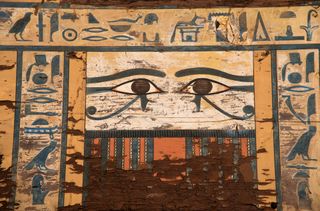
Painted eyes decorate the cedar coffin of Sattjeni, an important figure in the 12th Dynasty (1950-1775 B.C.) Egyptian town of Elephantine. Sattjeni was the second daughter of Sarenput II, the governor of Elephantine. Sarenput II had no surviving male heirs, so the line passed to Sattjeni and her older sister Gaut-Anuket. Gaut-Anuket married a local official named Heqaib, who subsequently became Elephantine's governor; soon after, presumably after Gaut-Anuket's death, Sattjeni married Heqaib. Two of her sons would go on to become governors (Heqaib III and Ameny-Seneb).
Sattjeni's coffin
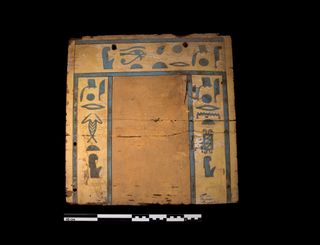
Hieroglyphics painted on the coffin of Sattjeni. This ancient Egyptian matriarch was mummified, wrapped in linen and placed in two cedar coffins made from wood imported from Lebanon. The outer coffin had decayed significantly when archaeologists opened Sattjeni's tomb this year, but the inner coffin was in near-perfect condition. The reason why is unknown, said excavation leader Alejandro Jiménez-Serrano, an Egyptologist at Universidad de Jaén in Spain, but it's possible the inner coffin was treated with some sort of preservation substance that archaeologists have yet to detect. [Read full story on Sattjeni's tomb]
Uncovering a coffin
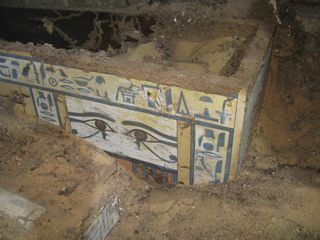
The coffin of Sattjeni in her tomb. Sattjeni was laid to rest in the necropolis at Qubbet el-Hawa, across the Nile River from Aswan. At least 100 tombs are in this necropolis, said Jiménez-Serrano, and about 80 of those have been fully excavated. The necropolis was used to bury non-royal officials of the nearby town of Elephantine, some of whom have elaborate and inscribed tombs that reveal their family relationships. In 2014, the excavation led by Jiménez-Serrano also discovered the tomb of Heqaib III, Sattjeni's son and a governor of Elephantine. Heqaib III's mummy was found with its painted mask largely intact. [Read full story on Sattjeni's tomb]
Mask of a lady
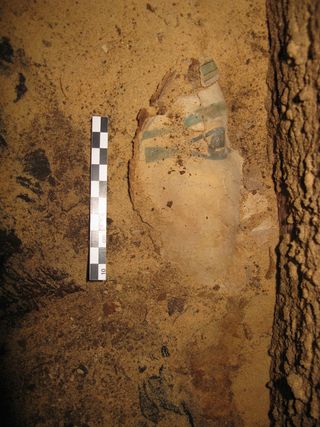
The remains of the burial mask of Sattjeni. Though not royal, Sattjeni was part of a powerful and prominent family who claimed an association with the ram-headed god Khnum. Sattjeni had dynastic rights in Elephantine, the Nile island town nearby Qubbet el-Hawa, and her husband and sons would take on the role of governor of the town as well as overseers of Khnum's priests. [Read full story on Sattjeni's tomb]
Tomb Discovery
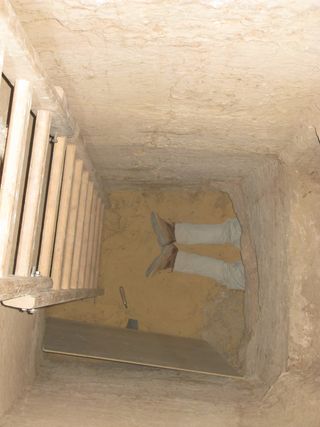
Sattjeni's tomb was found at the end of a shaft first discovered in 2013. In the 2016 field season, Jiménez-Serrano and his team excavated this shaft with mounting anticipation. Here, an archaeologist crawls into the tiny aperture that allows entry into the tomb. The first glimpse inside the tomb revealed hieroglyphics, Jiménez-Serrano said, which turned out to be decorating Sattjeni's coffin. [Read full story on Sattjeni's tomb]
Sign up for the Live Science daily newsletter now
Get the world’s most fascinating discoveries delivered straight to your inbox.

Stephanie Pappas is a contributing writer for Live Science, covering topics ranging from geoscience to archaeology to the human brain and behavior. She was previously a senior writer for Live Science but is now a freelancer based in Denver, Colorado, and regularly contributes to Scientific American and The Monitor, the monthly magazine of the American Psychological Association. Stephanie received a bachelor's degree in psychology from the University of South Carolina and a graduate certificate in science communication from the University of California, Santa Cruz.










